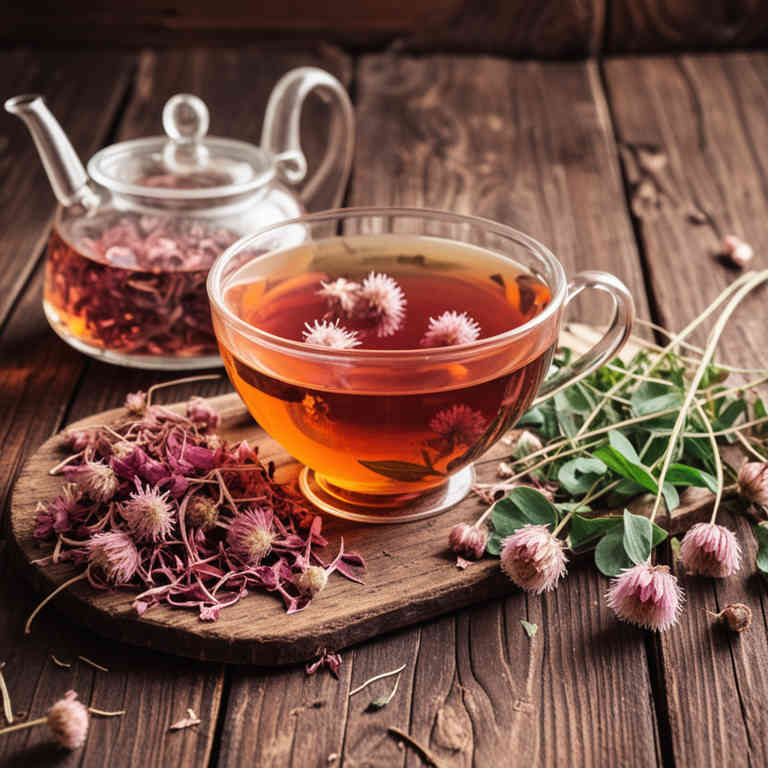Trifolium pratense tea for medicinal use

Trifolium pratense tea is a herbal preparation made from the dried leaves of the red clover plant, which is known for its pink or purple flowers.
This tea is commonly used in herbalism for its potential to support respiratory health, alleviate menopausal symptoms, and promote skin health. It is often consumed as a mild tonic to help reduce inflammation and ease digestive discomfort. In traditional medicine, it has also been used to support hormonal balance and improve circulation.
Its mild flavor and versatile applications make it a popular choice in both modern and traditional herbal practices.
Uses
Trifolium pratense tea has been used to treat a variety of health conditions for centuries, with roots in ancient herbal medicine traditions.
Historically, it was valued by Native American tribes and early European settlers for its calming and nourishing properties. Traditionally, it was used to alleviate anxiety, promote relaxation, and support cardiovascular health. In modern times, it is widely consumed as a natural remedy for stress relief, menopause symptoms, and digestive issues.
Its rich content of antioxidants, vitamins, and minerals continues to make it a popular choice in holistic health practices.
Benefits
Trifolium pratense tea has health benefits such as reducing inflammation, supporting heart health, and promoting relaxation.
It is rich in antioxidants, which help neutralize free radicals in the body and may reduce the risk of chronic diseases. This herbal tea is also known to improve mood and reduce symptoms of anxiety due to its calming properties. Additionally, it may aid in digestive health by soothing the gastrointestinal tract.
Regular consumption of Trifolium pratense tea can contribute to overall well-being when used as part of a balanced lifestyle.
Constituents
Trifolium pratense tea active constituents include flavonoids, particularly quercetin and rutin, as well as polyphenols, tannins, and vitamin C. These compounds contribute to its antioxidant and anti-inflammatory properties.
The tea is traditionally used to support cardiovascular health by improving blood vessel function and reducing oxidative stress. It may also aid in managing symptoms of menopause due to its phytoestrogen content.
Overall, Trifolium pratense tea is valued for its potential to promote overall wellness through its diverse bioactive components.
Preparation
To make Trifolium pratense tea, start by gathering fresh or dried red clover blossoms, which are the primary ingredient.
Rinse the blossoms thoroughly to remove any dirt or debris. Place the blossoms in a heatproof container and pour boiling water over them, ensuring they are fully submerged. Let the mixture steep for 10 to 15 minutes to allow the beneficial compounds to infuse into the water.
Strain the tea into a cup and enjoy it either hot or cooled, optionally adding a touch of honey or lemon for flavor.
Side Effects
Trifolium pratense tea may lead to gastrointestinal discomfort, including nausea, vomiting, or diarrhea, especially when consumed in large quantities.
It may also cause allergic reactions in individuals sensitive to plants in the legume family. Prolonged use could potentially interfere with blood clotting, increasing the risk of bleeding. Some studies suggest it may lower blood pressure, so caution is advised for those already on medication for hypertension.
Additionally, it may interact with certain medications, such as anticoagulants or diabetes drugs, leading to unintended health effects.